
Bulletin 8 (IV:2), 1966
Home
Français
Introduction
History
Annual Index
Author &
Subject
Credits
Contact

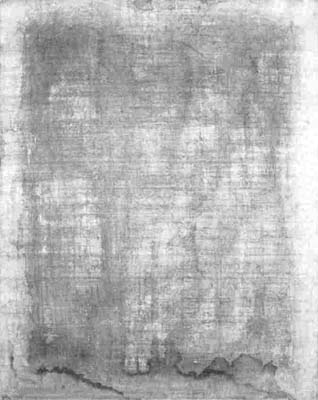

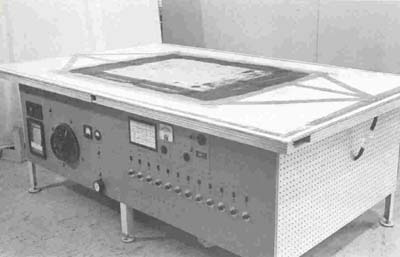

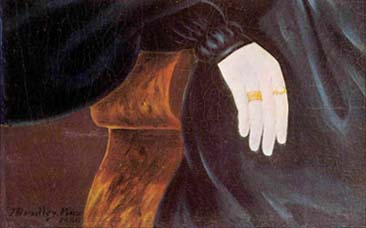
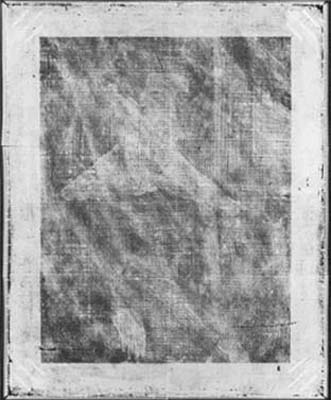
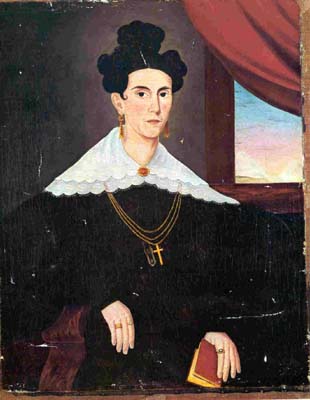
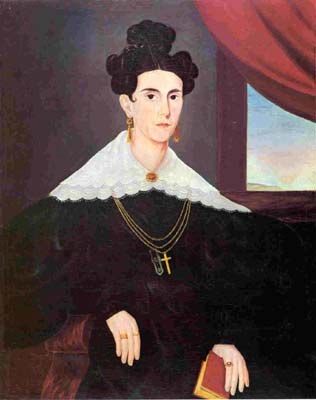
A
Resurrected Portrait and its Case History
by Mervyn Ruggles, Conservator
National Conservation Research Laboratory
Résumé en français
Pages 1 | 2
An anonymous ancestral portrait was brought to the National
Gallery in 1964 for artistic evaluation. The painting, part of an
estate, (1) had been found hidden behind a cupboard, covered with
dust, partly detached from its stretcher, badly creased, apparently
abandoned and destined for the trash heap. Study by the Research
Curator, Mr Willem A. Blom, indicated that this Portrait of a
Lady appeared to have been painted by a Canadian or American
artist circa 1840, was a good example of portraiture of that period
and was worth preserving. Subsequently, after a favourable
preliminary investigation carried out in the laboratory, the
painting was offered to the Board of Trustees Acquisition Committee,
who decided to purchase it. The Conservation Laboratory was
immediately requested to undertake the urgently needed preservation
treatment. The account that follows here attempts to describe the
case history of this reclamation project and the gratifying
disclosure that came about during the process.
As in all art conservation procedures, documentation commenced with
photography of the portrait by normal light, by ultra-violet
fluorescence and by infra-red film before treatment. The picture
when first received was rolled up like a window blind, paint side
inwards. In Fig.1, the effect by oblique illumination shows the
resulting surface irregularities. The linen canvas support was
desiccated and brittle, with a five-inch-wide water stain across the
lower sector. Much of the turnover edges of the canvas were tattered
and had broken away, the tack heads having rusted through as well.
The white ground preparation had penetrated from the front in
scattered regions (Fig. 2). Examination of the margins indicated
that this ground coat had been applied, most likely, by the artist
himself, after the canvas was mounted on the stretcher. Chemical
tests on microscopic samples demonstrated that this priming has a
white lead content. An extensive network of age cracks exists
throughout the smooth paint layer, most noticeable in the lighter
tones of the face, hands and white lace collar. In some
sectors the cracks had elevated edges, and numerous areas of paint
abrasion were observed in a one-inch-wide strip at the upper edge.
Several scrapes produced by pressure of a blunt object both
from the front and the rear were noted. In almost every case these
were accompanied by paint losses. Many tears and breaks in
the canvas as well as the paint losses are evident as light spots in
the ultra-violet fluorescence photograph (Fig. 3). living over the
paint laver was a coating of natural resin varnish resembling a dark
yellow-brown veil with a dense film of accumulated grime
superimposed, which converted the dark blue dress to a formless
black area and completely obscured the delicate modelling of its
folds. Close inspection under the binocular microscope confirmed the
evidence produced by the infra-red photographs and the
ultra-violet light that no restorations, cleaning or retouching had
been carried out previously. The cleared areas at the right margin,
on the right hand and the collar, are solvent tests which convey to
the eve the degree of discolouration produced by the
old varnish and the surface accretions.
The first step in the conservation treatment was to insert a gesso
mixture consisting of glue-size and calcium carbonate at all damaged
places to compensate for the losses, prior to covering the paint
surface completely with wet-strength tissue paper employing a thin
size, in order to secure the paint structure while cleaning the back
of the canvas and removing irregularities. In preparation for
reinforcing the deteriorated canvas, a linen liner was stretched on
a temporary frame and an adhesive mixture of four parts of yellow
beeswax, four parts Multiwax W445 and one part AW2 resin was brushed
on to it. The adhesive was coated also over the back of the
portrait. Lamination of the new linen to the back of the old canvas
was accomplished under vacuum (2) on the hot table (Figs. 4 & 5),
where the temperature was gradually raised to 76 degrees Centigrade,
the melting point of the adhesive, which proceeded to permeate the
two fabrics and the paint structure. As the temperature returned to
normal all layers became unified and consolidated.
The tissue-paper facing, having served its purpose, was released
from the front using mineral spirit and water. The next stage was
removal of the grime and discoloured varnish, executed in two steps.
The first by means of diacetone alcohol diluted with 25%
water applied with an artist's soft hog-hair brush in small areas
within each of the various colour passages of the painting. The
dissolved resin was taken up by rolling cylindrical dental cotton
pads over the surface. In the second step, acetone on cotton-tipped
applicators removed any remaining resin. The paint, of good quality,
with a strong oil bond, was unaffected by the solvents used. Only
after the cleaning process had reached the lower left corner was the
startling discovery made of the firm clear signature' J. Bradley,
Pinx / 1836' (3, 4, 5) in black paint directly over the very dark
maroon background to the left of the armrest of the Empire sofa.
Fig. 6 shows the signature in detail. The artist's name had remained
obscured and undetected in spite of the diligent visual and optical
examinations already cited above.
The lined picture was mounted on a custom-made expandable stretcher
secured at each corner with miniature metal capstans and
stainless-steel dowels. If the canvas requires tightening in the
future, the capstans can be rotated causing the mitres to expand. A
composite radiograph (6) consisting of six overlaps made after the
portrait had been mounted on its new stretcher is shown in Fig. 7,
where the construction of the corners is revealed. (7) The edges of
the canvas are attached to the stretcher edges with zinc-coated
tacks.
Following a drying period of four weeks (Fig. 8), two applications
of normal butyl methacrylate dissolved in xylene were sprayed on
after in-painting the gesso inserts with pigment in Lucite 2044
medium to match surrounding areas, care being exercised to avoid
covering any original paint. A final coating of methacrylate
containing 6% white beeswax for a mat finish completed the
treatment.
This signed and dated portrait by J. Bradley, (8) representing a
fashionable lady of the 1836 period, (9) now becomes a worthy
addition to the nation's collection (Fig. 9). In July of this year,
fresh and interesting information on artist Bradley's work has been
brought to light by Mrs Mary Black and Mr Stuart Feld, whose account
appears in the preceding article in this Bulletin.
Next Page | Notes
1 | 2
Annual Index | Author & Subject | Credits | Contact
This digital collection
was produced under contract to Canada's Digital Collections program,
Industry Canada.
"Digital
Collections Program, Copyright
© National Gallery of
Canada 2001"